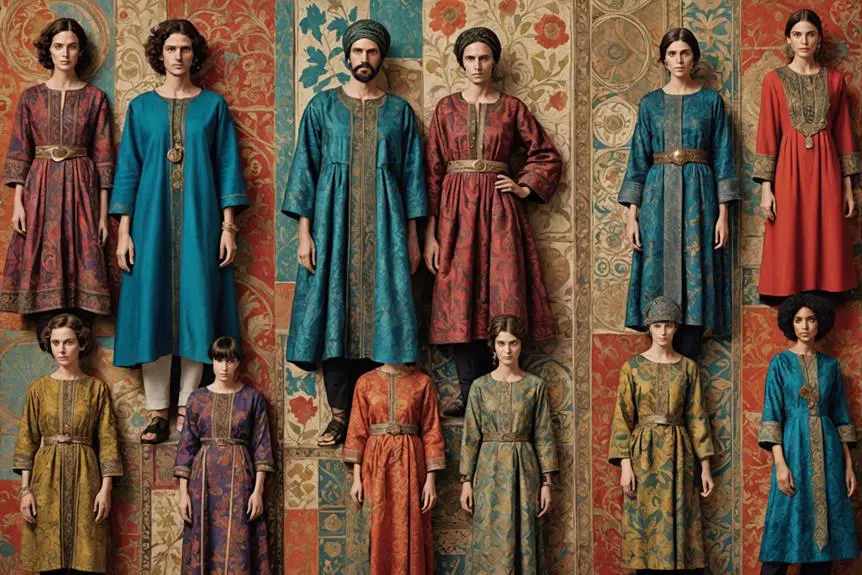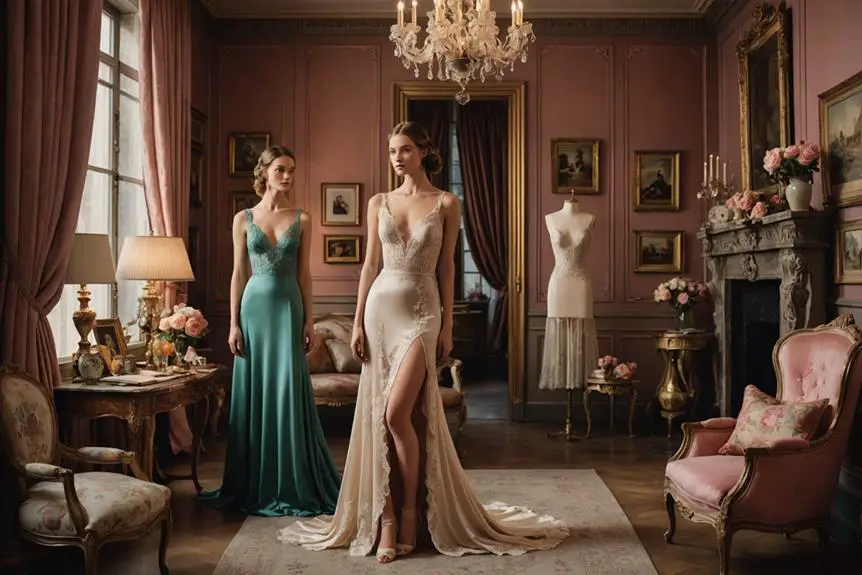The tunic is a thread weaving through the fabric of human history, symbolizing both status and freedom across cultures. You might find it intriguing how this seemingly simple garment evolved from the ancient chiton to a modern staple, adapting to reflect societal changes and personal identities. As you explore its journey, consider how the tunic's design and use reveal deeper cultural significance. What might this enduring piece of clothing tell us about the people who wore it, and how has its meaning shifted over time?
Historical Context of Tunics
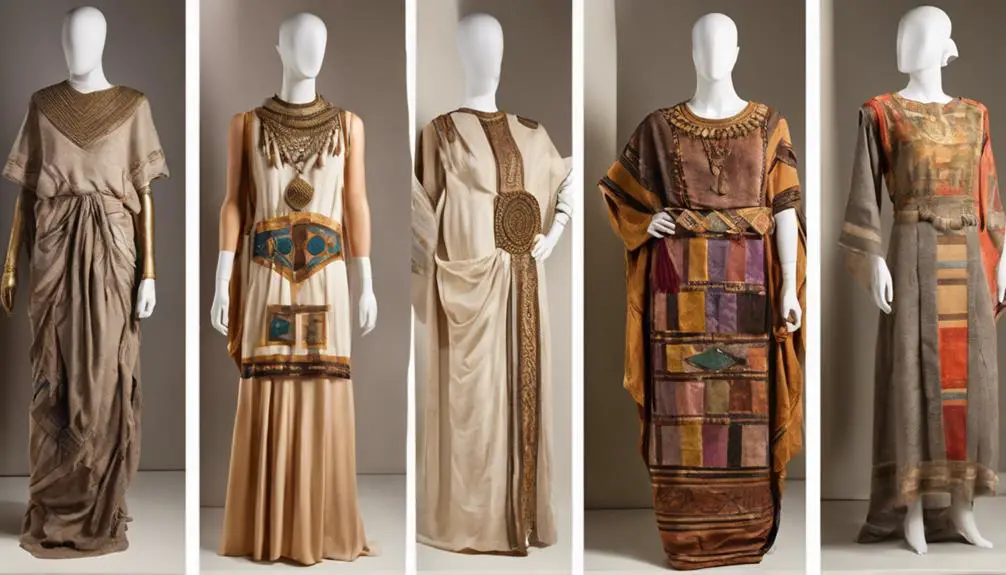
The tunic has a rich history that traces back to ancient Greece, where it evolved from the simple chiton into a versatile garment. Can you imagine wearing a piece of clothing that's been around for so long? The tunic was popular in ancient Rome too, where both men and women wore it, often layering it with other garments to show off their style and status. Each design had its own meaning; for instance, senators wore a special tunic called the laticlavus. Pretty cool, right?
As we move through history to the Middle Ages, the tunic didn't just disappear. Nope! It continued to be worn, adapting to different cultures. The Celtic peoples sported brightly dyed and embroidered tunics, paired with trousers and cloaks, reflecting their unique fashion sense. Meanwhile, Germanic tribes favored long-sleeved tunics, which got more elaborate over time, proving that the tunic was here to stay, even after the Western Roman Empire fell.
Let's not forget about the Indian subcontinent, where tunics like the kurta emerged. These were often intricately embroidered, showcasing local traditions and cultural practices. So, whether you're in Greece, Rome, or India, the tunic has played a significant role in how people express their identity through fashion. Isn't it amazing how one garment can carry so much history and meaning? The tunic truly deserves a round of applause!
Evolution in Modern Fashion
Tunic dresses have transformed considerably in modern fashion, particularly since the 1960s when they became symbols of freedom and self-expression during the hippie movement. Can you imagine stepping out in a tunic dress, feeling all the bohemian vibes? It's no wonder they've become a staple in so many wardrobes! Designers like Cristobal Balenciaga gave the tunic dress a fresh twist in the 1950s, paving the way for its rise in high fashion. Then came Yves Saint Laurent, who embraced these dresses in his bohemian styles, mixing in ethnic motifs and decorative lacing that made them even more enchanting. The evolution of fashion includes brands that have adapted their styles over the decades, much like how vintage Ralph Lauren items are identified through their unique characteristics.
Today's tunic dresses are incredibly versatile. You can find them in various lengths, with long bell or kimono sleeves that add flair to your look. Want to dress it up? Pair it with some chic cigarette pants or sleek leggings. Feeling a bit more laid-back? Jeans work perfectly too! And don't forget about accessories—hoop earrings and floppy hats can really tie the whole outfit together.
Whether you're heading to a casual brunch or dressing up for a night out, the tunic dress has you covered. It's easy to see why these comfy, stylish dresses have stood the test of time. So, what are you waiting for? Plunge into your closet, find that tunic dress, and let your inner fashionista shine!
Cultural Significance and Symbolism
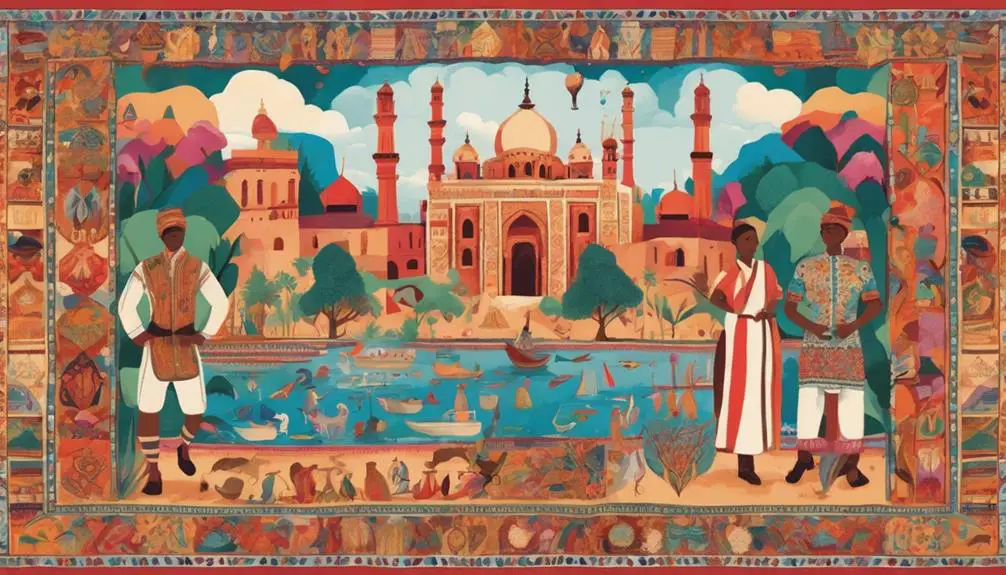
When you think about tunics, it's amazing how much they say about who you are and where you come from! From the elegant Vietnamese áo dài to the classic Roman styles that scream social status, tunics have been part of our identity for ages. Plus, don't forget their role in rituals and ceremonies, like the special alb worn in religious settings—these garments carry stories that connect us to our cultures!
Identity Across Cultures
Garments like tunics carry deep cultural significance, acting as powerful symbols of identity across various societies. Think about it—when you see a Vietnamese Áo Dài, you instantly recognize it as a symbol of national pride, right? In Ancient Rome, the type of tunic you wore could make a statement about your social status. A senator flaunted a laticlavus while an equestrian sported an angusticlavia. It was all about rank!
Now, let's talk about those vibrantly colored tunics worn by the Celtic peoples. Diodorus Siculus noted their unique styles, showcasing how fashion can express culture. Isn't that fascinating? These tunics weren't just everyday wear; they often played a role in important life events, connecting people to their heritage and traditions.
Even today, tunics have evolved but still hold that deep significance. You'll find them worn for both casual outings and special occasions. So, next time you see someone in a tunic, think about the layers of identity and cultural symbolism woven into that fabric. It's more than just clothing—it's a story waiting to be told!
Ceremonial and Ritual Uses
Throughout history, tunics have been integral to various ceremonial practices, serving not just as clothing but as symbols of cultural identity and heritage. Think about it: tunics were often dyed in vibrant colors, each hue holding its own meaning. They weren't just fabric; they were messages!
Here's a quick look at how tunics played a role in ceremonies:
- In ancient societies like Rome and Greece, tunics were worn during religious ceremonies, connecting people to divine authority.
- Medieval tunics made big statements too! Clergy wore them during rituals, emphasizing their spirituality and community ties.
- Even today, traditional tunics are worn at events like weddings and festivals, keeping culture alive and honoring the past.
Isn't it fascinating how something as simple as a tunic can convey so much? These garments reflect cultural identity, marking important moments in life. So the next time you see someone in a beautiful tunic, remember there's a rich history woven into each stitch! Whether it's a vibrant Vietnamese Áo Dài or a classic medieval tunic, they're more than just clothes; they're a celebration of who we are.
Academic References and Research
The study of the tunic reveals a rich tapestry of cultural significance and evolution across various societies. This simple garment, worn by men and women alike, has a fascinating history that reflects the times and places it's been a part of. Have you ever thought about how styles of clothing can tell us so much about a culture? For instance, the resurgence of interest in vintage clothing, particularly tunics from different decades, showcases the enduring appeal of this versatile garment. This popularity aligns with the broader trends in vintage clothing market growth, which highlights how these styles continue to resonate with consumers today.
For instance, Paul Haupt's "The Book of Canticles" dives into the importance of historical garments like the tunic, showing how they've shaped identity and status. Jan Radicke's "Roman Women's Dress" highlights specific tunic styles that Roman women wore, revealing the differences and variations that existed. Isn't it amazing how something so basic can change so much over time?
Blanche Payne's "History of Costume from the Ancient Egyptians to the Twentieth Century" gives a sweeping overview of the tunic's role through the ages. You'll find that each era brought new styles and meanings! Similarly, Gale R. Owen-Crocker's "Dress in Anglo-Saxon England" explores how tunics influenced society, especially during medieval times.
And don't forget Nancy Bradfield's "Historical Costumes of England: 1066–1968," which lays out a timeline of tunic styles that reflect shifts in fashion and cultural norms. So, next time you see a tunic, remember it's not just clothing; it's a piece of history! Isn't that cool?
Visual Documentation and Exhibitions
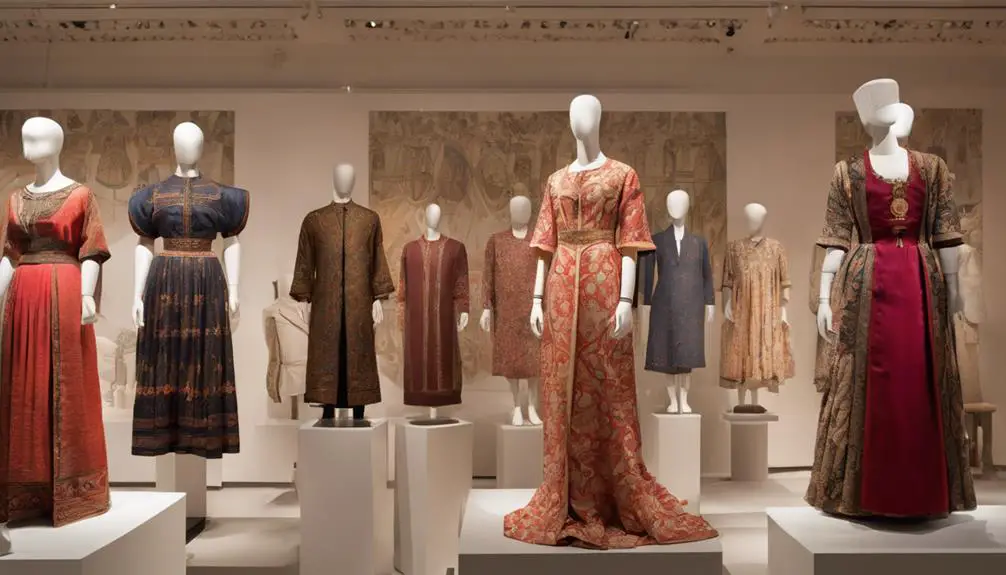
Have you ever checked out an exhibition featuring tunics? It's amazing how these garments tell stories from ancient times to today, showing us their cultural significance and unique styles. From the Roman laticlavus to modern twists at places like the Met, visual comparisons really highlight their evolution and importance in our lives!
Historical Tunic Exhibitions
While exploring historical tunic exhibitions, you'll find a rich tapestry of styles that reflect the garment's evolution across cultures and eras. These displays often emphasize how the tunic continued to adapt, from ancient times to modern interpretations. You'll see beautifully crafted pieces that are richly embroidered, showcasing the artistry of different societies.
Here are three highlights you can expect to find in these exhibitions:
- Ancient Tunics: Exhibits often showcase the Roman laticlavus and angusticlavia, which were outer garments that used color and ornamentation to signify social status. Pretty neat, huh?
- Medieval Reenactments: Collections like those by Burgschneider feature tunics designed for reenactments, emphasizing authenticity. It's like stepping back in time!
- Modern Interpretations: You'll also discover how contemporary designers, like Pierre Cardin, have taken this classic piece and reimagined it, showing its enduring influence in fashion.
Whether you're admiring the craftsmanship or the stories behind these garments, you can't help but appreciate how the tunic has been documented by the Greek and layered differently throughout history. So, what are you waiting for? Immerse yourself in the world of tunics!
Visual Comparisons Across Eras
Exploring visual comparisons across eras reveals the tunic's transformation in design and significance throughout history. When you look at tunics from different periods, you can see some pretty wild changes! Take the simple rectangular designs of Ancient Greece, for example. They were all about comfort and ease. Fast forward to the late Middle Ages, and you'll find tunics that are fitted and often decked out with decorative elements like broad purple stripes. Those stripes weren't just for show; they signified social status!
Exhibitions, especially those at places like the Met, do a fantastic job of showcasing these different styles. You can really grasp how regional and historical influences shaped the tunic. And let's not forget the cultural significance! Each tunic tells a story about the time it was made. Some were used in ceremonies, emphasizing their importance in society.
Cultural Context in Displays
Cultural context enriches our understanding of tunics displayed in exhibitions, revealing their historical significance and societal roles. When you step into an exhibition showcasing tunics, you're not just looking at clothes; you're diving into stories! These displays highlight the journey of tunic styles, showing how they've evolved and changed across different cultures and eras. Here are three key aspects to contemplate:
- Visual Documentation: Exhibitions often feature photographs and artifacts, giving you a glimpse into how tunics were worn and perceived.
- Comparative Analysis: You can explore tunic styles from different times and places, showing their diversity and adaptability.
- Societal Norms: Curators use paintings and textiles to shed light on the fashion trends and societal norms tied to tunics throughout history.
Origins and Structure of Tunics
The tunic has its roots in ancient civilizations, specifically derived from the Latin term "tunica," which referred to a fundamental garment worn by individuals in Rome and Greece. Can you imagine walking through the bustling streets of ancient Rome, everyone rocking their tunics? It was the go-to garment for both men and women, making it a staple of everyday life.
Typically, tunics were made from two pieces of linen, sewn up the sides and top, with holes for the head and arms. They could be knee-length or even longer, depending on the wearer's style. Some were sleeveless, while others had sleeves—the choice was yours! You might have noticed that many people belted their tunics at the waist, giving them a stylish flair. And just think, some wore them under a mantle for that extra touch of class.
Now, let's talk about fabric. The common materials included both dark and light linen, and even white wool. But here's the kicker: the fabric you chose often reflected your social status! For instance, Roman senators sported broad purple stripes on their tunics, signaling their high rank.
As time went on, the design of tunics evolved. They started as simple undergarments but eventually became standalone pieces that mirrored the changing norms of society. So, next time you see a tunic, remember its fascinating journey through history! Isn't it amazing how a simple garment can tell such a rich story?
Frequently Asked Questions
Where Did the Tunic Originate From?
The tunic originated in ancient civilizations, crafted from textile materials like linen and wool. Its cultural significance varied across regions, showcasing distinct regional variations and influencing fashion evolution throughout history, reflecting societal norms and status.
What Does a Tunic Symbolize?
A tunic often symbolizes a powerful fashion statement, blending cultural significance with historical context. It serves as an artistic representation of gender expression, reflecting individuality and heritage, while appealing to diverse styles across various societies.
When Did Tunics Stop Being Worn?
You'll notice tunics began to decline in everyday wear during the 14th century, as fashion trends shifted. Their cultural significance diminished, leading to garment variations and historical usage mainly for specific ceremonies or children's clothing.
What Does the Tunic Mean in the Bible?
Tunic's true significance lies in its biblical garments, showcasing cultural meanings and rich religious symbolism. This ancient clothing represents humility, acceptance, and restoration, reflecting deep connections to faith throughout scripture and highlighting its enduring importance.
